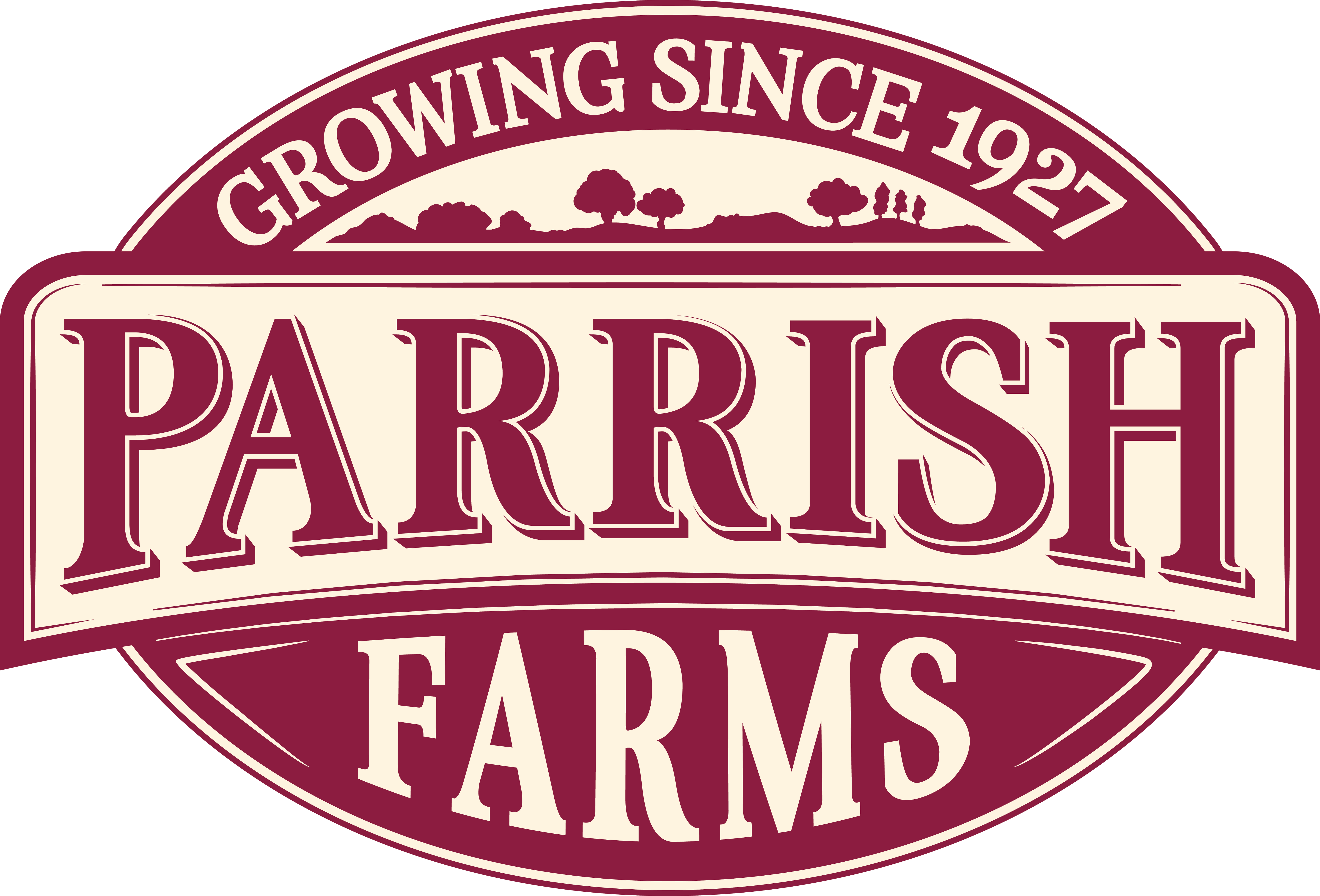News from Parrish Farms
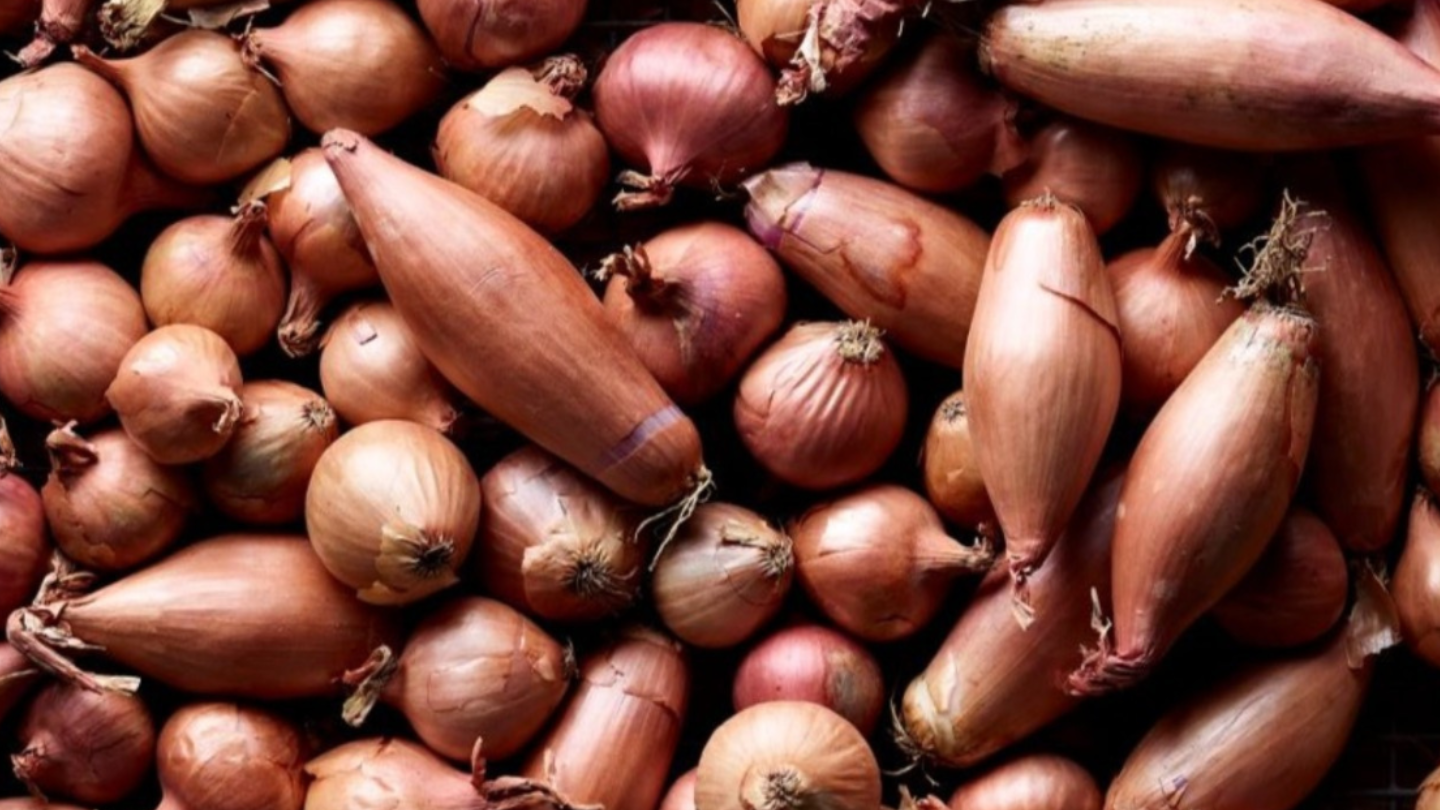
Recipe: Pickled Onions and Shallots
on Jul 01 2025
It's never been easier to pickle the perfect onion using our super simple pickling recipe. Here at Parrish Farms we have 90 years’ experience growing and pickling our own pickling onions and shallots using this recipe so hopefully you'll have the same success with it as we do.
Ingredients
750g onions or shallots, peeled
600ml Malt Vinegar (or enough to cover your onions)
1 Tablespoon Pickling Spices (or your chosen spices)
1 Tablespoon Salt (canning or pickling salt recommended as these do not contain the anti-caking agent that can spoil brine)
1 Litre Jar
1 Tablespoon Sugar (Optional)
Additional table salt
Method
Place your peeled onions in a bowl, sprinkle over some table salt and leave covered for 24 hours. This process helps them stay crunchy.
In a saucepan, bring your vinegar, salt, sugar and spices to the boil to make your pickling liquid.
Rinse your onions, dry with kitchen paper and spoon into sterilised jars. If you have any leftover spices, you can add them at this stage if desired.
Pour the hot vinegar into the jars, making sure your onions are completely covered.
Once cooled, tightly lid your jar and place in the fridge or keep in a cool place.
We recommend waiting at least 2 weeks before eating.
Consume within 3 months

Commitment to Wildlife Conservation: Our 'Focus 4' Species
on Jun 19 2025
At Parrish Farms, we take pride in upholding the highest environmental farming standards, following the LEAF Marque principles. We are always seeking innovative ways to protect local wildlife and support the recovery of endangered species in Bedfordshire. While we care for all creatures, we recognise that some need more targeted assistance. That’s why we’ve chosen four key species to monitor and provide the resources they need to flourish on our farm.
Barn Owls
Barn Owls are a cherished sight at our farm, gliding silently over the fields during warm summer evenings. Despite their widespread presence across the UK, their numbers plummeted during the 20th century due to harmful pesticides such as DDT. Fortunately, these chemicals have since been banned, but Barn Owls still need safe habitats to breed and thrive.
To encourage their recovery, we have installed several owl nesting boxes in secluded, sheltered locations where they can breed undisturbed. Each year, a licensed bird ringer visits to monitor their nesting progress, and we are delighted that many Barn Owls have successfully raised their young in these spaces.
Additionally, by preserving woodlands, planting hedgerows, and allowing sections of our land to grow wild, we support a thriving ecosystem that ensures a steady supply of prey for our Barn Owls. This approach not only benefits these majestic birds but also strengthens biodiversity across the farm.
Great Crested Newt
The Great Crested Newt is one of the UK’s most protected amphibians, and we’re proud to be making a difference for them right here on the farm. These remarkable creatures depend on clean, well-maintained freshwater habitats to breed, as well as terrestrial spaces to shelter and forage.
To support them, we monitor our pond life year-round, and we carry out monthly water quality checks in our rivers and reservoirs. Reeds have been planted to provide shelter and spawning areas, while banks are regularly maintained to prevent erosion and improve access for wildlife.
Here's an example of how we cleared out an overgrown pond and transformed it into an incredible, healthy aquatic ecosystem. The top photo shows the pond shortly after clearance, while the second captures how vibrant and full of life it is now. We removed excess silt, invasive vegetation, and shaded overhanging branches to restore open water and sunlight, both of which are essential for healthy ecosystems. These improvements have boosted oxygen levels, encouraged aquatic plants to thrive, and created ideal breeding conditions for Great Crested Newts and other freshwater species. It’s a powerful reminder that a little thoughtful intervention can go a long way in supporting pond life.
Yellowhammer
The Yellowhammer, with its bright yellow feathers and “a-little-bit-of-bread-and-no-cheese” song, is a welcome sight and sound across our hedgerows. Sadly, this once-common farmland bird is now in decline, largely due to the loss of suitable nesting habitats.
Yellowhammers prefer to nest in short, dense hedgerows next to ditches or rough field margins. They build their nests low to the ground and raise chicks well into late summer. For this reason, we avoid any hedge, ditch or margin cutting between 1 March and 31 August, giving these ground-nesting birds the best possible chance of a successful breeding season.
We’ve planted new hedgerows and are improving old ones through traditional hedge-laying, an effective way to thicken and rejuvenate hedges while creating shelter for wildlife. All hedge work is carefully timed to avoid disturbing any active nests. With these efforts, we’re building a landscape where Yellowhammers can safely return and raise the next generation.
Bumblebees
Wildlife conservation isn’t just about birds! Pollinators like Bumblebees play a vital role in our ecosystem, particularly in agriculture. Without them, UK farmers would face an estimated £1.8 billion increase in pollination costs, which would significantly impact food production. Alarmingly, eight Bumblebee species in the UK are endangered, with two already extinct.
To support these essential pollinators, we’ve designated large areas for nectar-rich wildflowers and hedgerows, ensuring a continuous supply of pollen throughout the year. We also provide safe nesting spaces by preserving undisturbed grassland and installing specialist Ceramic Bumblebee Nesters, giving these busy insects the best chance of survival.
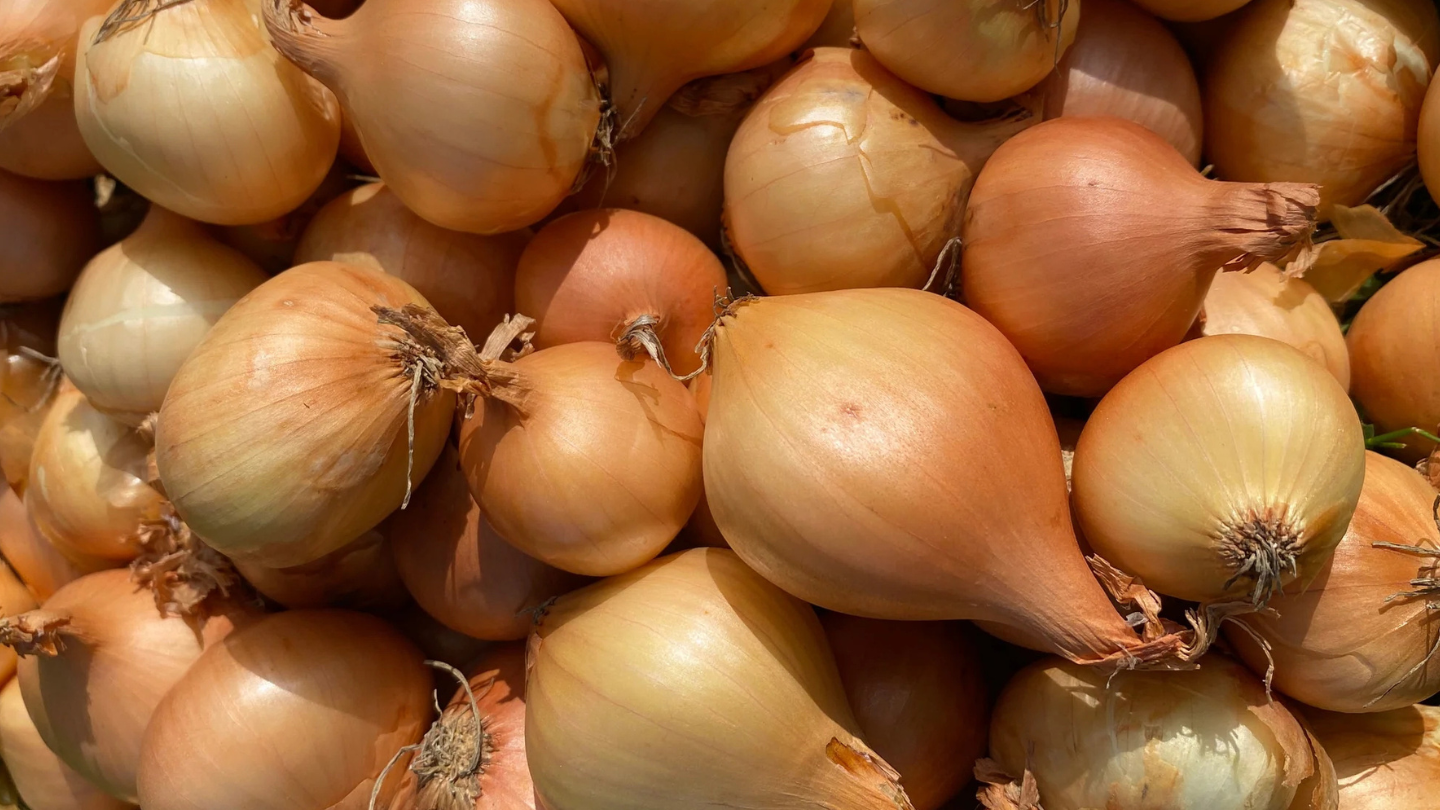
The Benefits of Using Large Pickling Onions
on May 07 2025
When it comes to pickling onions, size matters. While smaller onions have their place, large pickling onions offer several unique advantages that make them a preferred choice for many home cooks and professional chefs alike. From ease of preparation to superior flavour and texture retention, here’s why opting for large pickling onions can be a smart choice.
1. Easier Handling and Preparation
One of the biggest advantages of using large pickling onions is their ease of handling. Larger onions are simpler to peel, slice, and prepare, saving you valuable time in the kitchen especially when working with large batches. Their size makes them easier to grip, reducing the frustration that often comes with peeling and trimming smaller onions.
2. Versatility in Use
Large pickling onions offer greater versatility in how they can be used. They can be pickled whole for a bold, eye-catching presentation, or sliced and halved to suit different culinary needs. Whether added to sandwiches, salads, or served as a garnish, their size allows for more creative applications in both home and professional settings.
3. More Intense Onion Flavour
If you love a strong onion taste, large pickling onions are an excellent choice. Their larger size often results in a more pronounced and robust flavour, which infuses beautifully into pickling solutions. This enhances the depth and intensity of the final pickled product, making them ideal for those who enjoy a bold, tangy taste.
4. Better Texture Retention
A key challenge in pickling is maintaining the perfect crunch, and large onions excel in this area. Due to their lower surface area to volume ratio, they soften less during the pickling process, allowing them to retain their firmness and satisfying bite for longer. If you prefer your pickled onions to have a crunchy texture, larger varieties are the way to go.
5. Impressive Appearance
Presentation matters, especially when serving pickled onions as part of a meal or appetiser platter. Large pickled onions make a striking visual impact, whether displayed in jars, served whole, or incorporated into charcuterie boards. Their size adds an element of sophistication and makes them an appealing feature in various dishes.
6. Less Shrinkage During Pickling
Smaller onions tend to shrink significantly during the pickling process, altering their appearance and texture. In contrast, larger onions retain more of their original size and shape, ensuring that they look as good as they taste. This makes them a reliable choice for those who value consistency in presentation.
7. More Economical Option
Buying larger onions can be more cost-effective, particularly when purchasing in bulk. You get more usable onion per unit, making them a budget-friendly option for those who do a lot of pickling. Whether you're pickling for personal use or commercial purposes, larger onions can help you maximise your yield.
Why Choose Large Pickling Onions?
With their ease of preparation, robust flavour, superior texture retention, and visual appeal, large pickling onions are an excellent choice for anyone looking to create high-quality pickled onions. Whether you’re an experienced pickler or just starting out, these onions provide a practical and delicious solution for all your pickling needs.
Explore our range of baby, medium, and large pickling onions to find the perfect fit for your recipes!
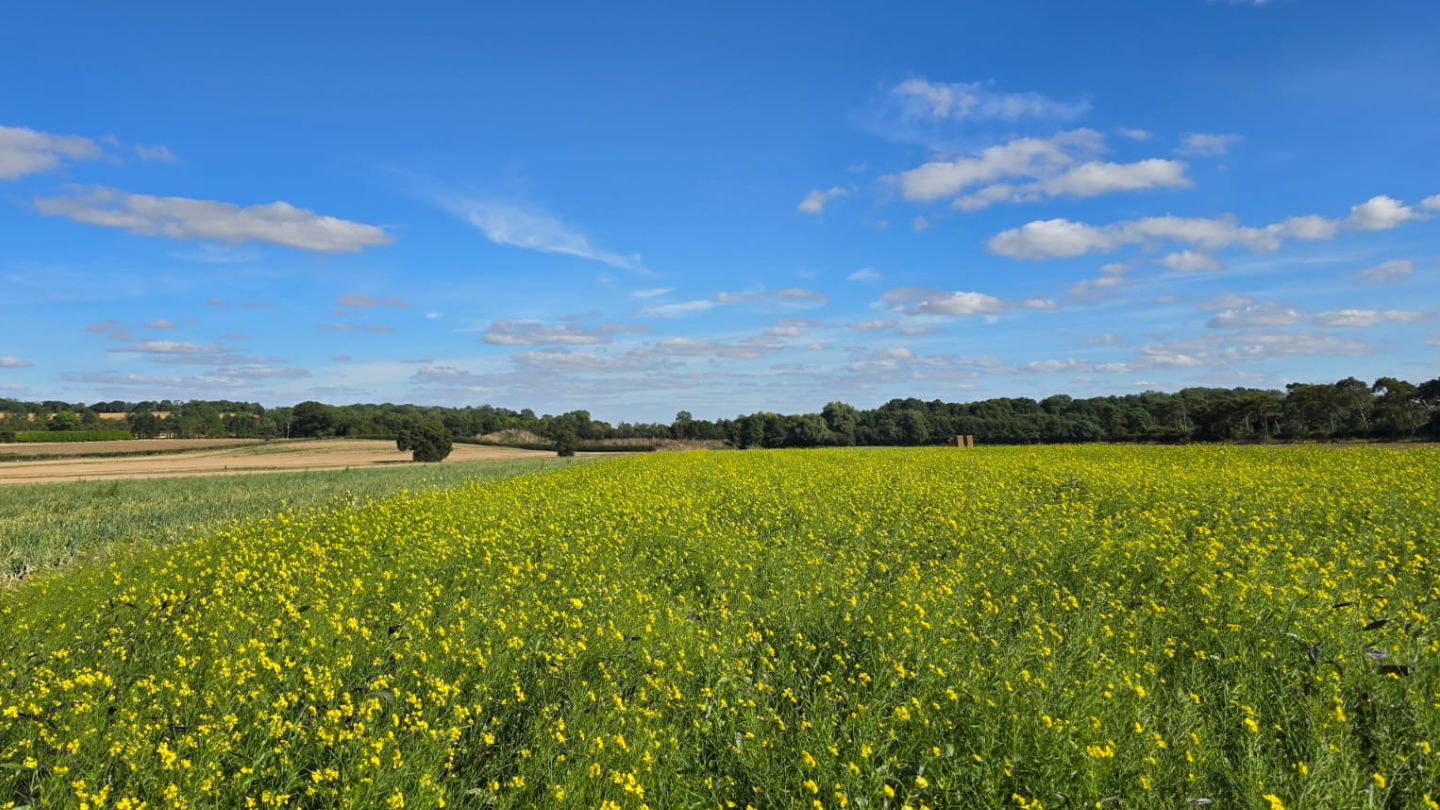
Embracing Sustainability: The Power of Biofumigant Mustard
on Apr 04 2025
A Bold Step Towards Sustainable Farming
In 2024, we took a significant leap towards sustainability by introducing Biofumigant Mustard, a revolutionary alternative to traditional pesticides and chemicals. This remarkable crop serves a dual purpose: acting as both green manure and a natural biofumigant. Not only does it enhance soil health, but it also releases powerful, naturally occurring compounds that combat stubborn weeds and pests.
The Magic of Biofumigant Mustard
Planted in late spring, Biofumigant Mustard transforms fields into a breathtaking sea of golden yellow flowers within just three months. While these vibrant blooms are visually stunning, the real impact comes when the plants are mowed and rapidly incorporated into the soil. Timing is crucial—this must be completed within an incredibly short 20-minute window to retain the crop’s natural pest-fighting gases.
Following this rapid incorporation, the field is given time to breathe and regenerate. A five-year break ensures the soil is fully rejuvenated and primed for onions to flourish once more. By adopting Biofumigant Mustard, we are not just growing crops; we are cultivating a healthier environment for generations to come.
Why Use Green Manure Crops?
Green manuring is an ancient yet highly effective agricultural practice involving the incorporation of green plant tissue into the soil. This economical and practical technique helps restore soil vitality while offering an array of benefits, including:
Enhanced Soil Fertility & Structure – Adds essential nutrients and organic matter.
Improved Soil Aeration – Creates a healthier environment for root growth.
Increased Water Infiltration & Retention – Helps the soil retain moisture more effectively.
Erosion Control – Reduces the impact of wind and water erosion.
Boosts Soil Biodiversity – Encourages the proliferation of beneficial microbes and organisms.
Ideal for Organic & Conventional Farming – Works well in integrated crop management (ICM) and low-risk input systems.
Higher Yields in Subsequent Crops – Leads to measurable improvements in crop productivity.
For vegetable growers, green manure crops significantly reduce weeding costs, lowering reliance on herbicides and minimising the need for manual or mechanical weeding.
Understanding the Biofumigation Process
Biofumigation is the process of suppressing soil-borne pests and pathogens through naturally occurring compounds, predominantly isothiocyanates (ITCs), released from Brassicaceous plant tissues. When these plant tissues are damaged, glucosinolates interact with the enzyme Myrosinase in the presence of water to produce ITCs.
Unlike simple green manure crops, Caliente Mustards and Nemat have been specifically bred to produce substantial biomass and contain high levels of glucosinolates and enzymes essential for effective biofumigation.
Additional Uses of Green Manure Crops
Beyond their role in sustainable farming, Caliente Mustards can be utilised in various agricultural practices, including:
Forestry and Tree Production
Protected Cropping
Ornamental and Hardy Nursery Stock
Cut Flower Production
Bulb Production
Viticulture (Wine and Table Grapes)
A Sustainable Future with Biofumigant Mustard
By incorporating Biofumigant Mustard into our farming practices, we are taking a proactive approach to sustainability, enhancing soil health, and reducing our reliance on synthetic chemicals. This innovative approach ensures a healthier, more productive agricultural future while protecting the environment.
Join us on this journey towards a greener, more sustainable way of farming!
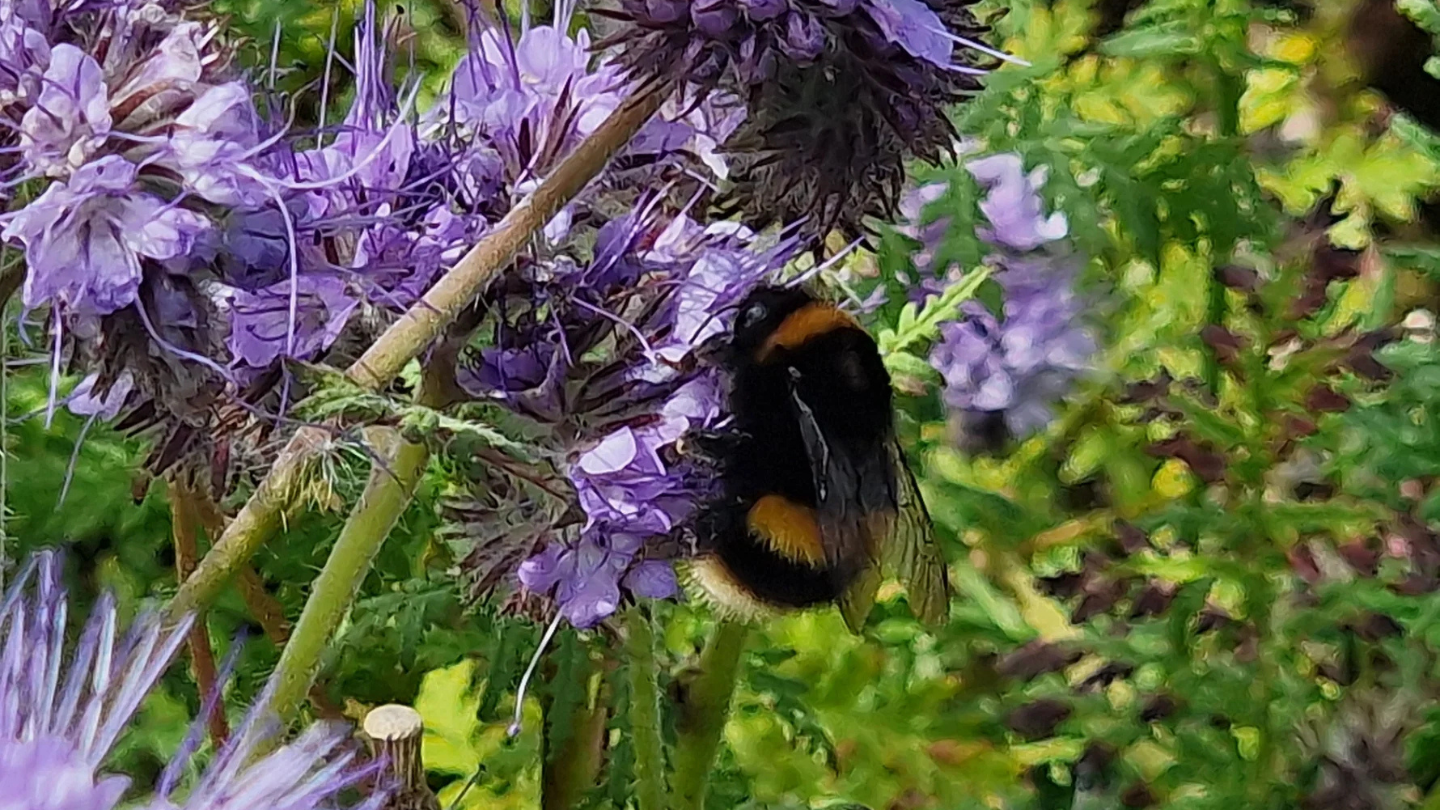
How We're Adapting Our Farm to Benefit the Ecosystem
on Mar 29 2025
At our farm, we are committed to working in harmony with nature. We believe that sustainable farming isn’t just about growing crops - it’s also about creating a thriving environment for wildlife and improving the health of our land. That’s why we’ve been making several changes to ensure our farm benefits the ecosystem. Here are some of the key initiatives we’ve undertaken to support biodiversity and help combat climate change.
Planting Hedges and Trees to Support Wildlife
One of our biggest recent projects has been planting 3,450 hedge plants and 40 trees. These trees and hedges are not only crucial for capturing carbon dioxide and releasing oxygen, but they also provide vital habitats for local wildlife. Birds and mammals use the dense foliage for nesting and shelter, while the flowering trees and shrubs offer a rich source of pollen and nectar for pollinators. When ground flowers are scarce, these hedgerows continue to sustain bees, butterflies, and other insects essential to the ecosystem.
Creating a Network of Field Margins
We’ve also established an extensive network of field margins to create a connected habitat for wildlife across our farm. Wildflower margins, grass strips, and watercourse buffer zones serve as essential corridors for small mammals, birds, and insects.
Grass margins provide food and shelter for small birds and mammals, while also serving as hunting grounds for larger predators.
Wildflower margins attract pollinators such as bees, butterflies, and hoverflies, playing a crucial role in maintaining a balanced ecosystem.
Water body buffers - grassland strips planted along reservoirs and watercourses - help improve water quality while offering safe habitats for voles, newts, toads, and dragonflies.
By ensuring wildlife can travel safely across fields in search of food, nesting sites, or protection from predators, we are helping to sustain a more diverse and resilient ecosystem.
Providing Food and Shelter All Year Round
We understand that the colder months can be particularly tough for wildlife, with limited food sources and harsh weather conditions. To address this, we leave overwintered stubble in our fields after harvest. This provides birds and small mammals with a crucial food source throughout autumn and winter.
Additionally, we’ve planted tussock grass across various fields to offer shelter during the colder months. When spring and summer arrive, our flower-rich margins, grasslands, and crops supply an abundance of food and nesting spaces for pollinators, birds, and mammals alike.
During hot weather, dehydration can be a serious concern for wildlife. That’s why we’ve also ensured there are water sources strategically placed across our farm, providing a lifeline for animals on dry days.
A Sustainable Future for Farming and Nature
By integrating these wildlife-friendly farming practices, we are not only enhancing biodiversity but also improving soil health, water retention, and pest control - all of which contribute to a more sustainable and productive farm. We believe that farming and conservation can go hand in hand, and we are proud to play our part in protecting and enriching the local ecosystem.
We will continue to explore new ways to support nature on our farm and look forward to seeing the positive impact of these efforts in the years to come. Stay tuned for more updates on our journey towards sustainable and eco-friendly farming!
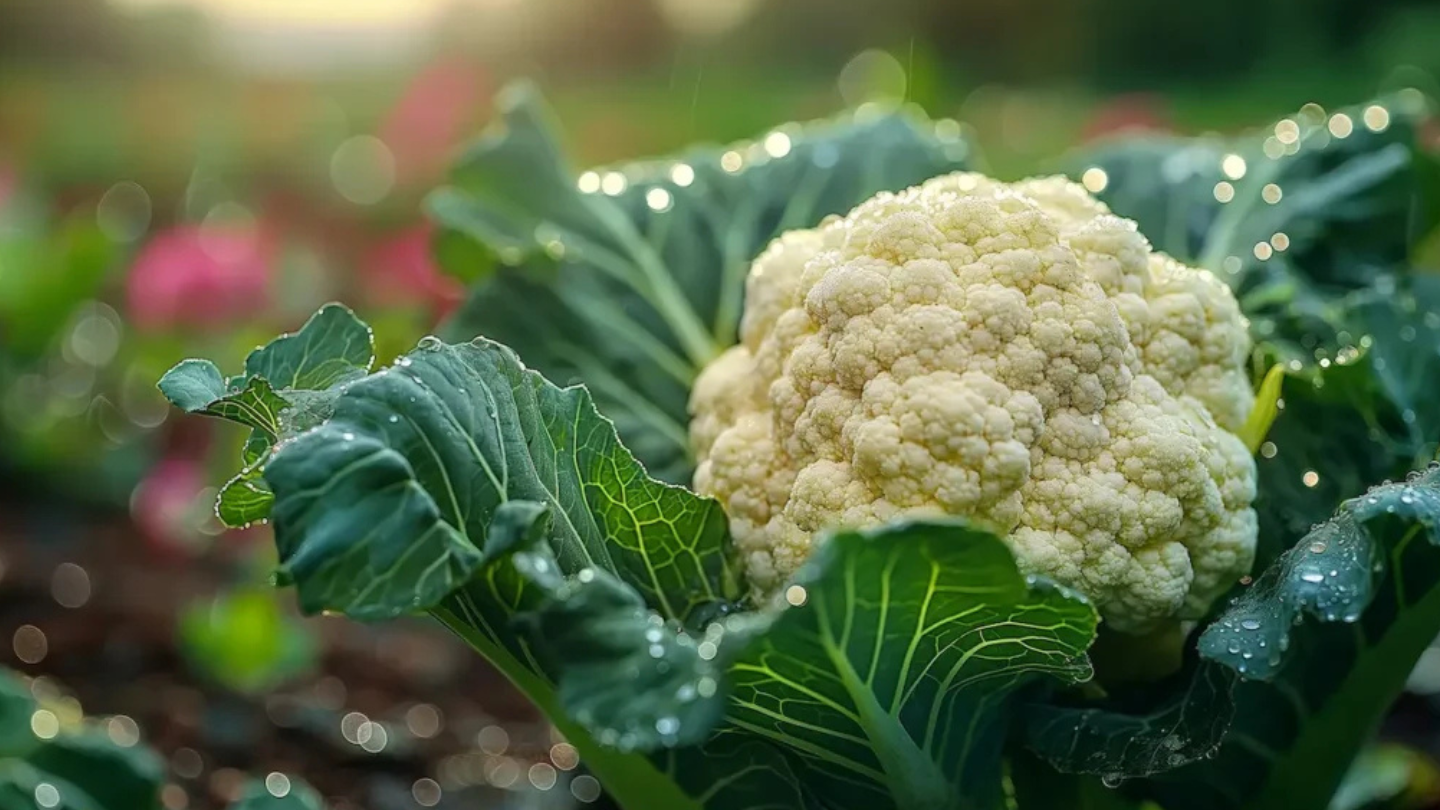
on Mar 27 2025
Use up extra cauliflower with this easy pickled cauliflower recipe. This will make a perfect low-carb snack that can be enjoyed for months to come! Our farmers have passed down pickling recipes for generations which have been perfected over the years. So we are excited for you to try the delicious taste of Parrish history. Pickled cauliflower will make a great salad topper, or bring a bit of zing to a cheese board.
Ingredients
1 head of cauliflower
235ml/1 Cup of Apple Cider Vinegar or White/Distilled Vinegar
235ml/1 Cup of Water
2 Teaspoons Sea Salt
1 Garlic Clove, Sliced
1 Teaspoon Pickling Spices (or your chosen spices)
1 Small Lemon, Sliced (Optional)
1 Litre Jar
Method
In a saucepan, bring your vinegar, salt, spices and water to a boil to make your pickling liquid
Wash your cauliflower and cut or break it up into florets
Slice your garlic and lemon (if using) and add some to the bottom of the jar
Fill the rest of the jar up with your cauliflower and add some more lemon on top if an extra lemony flavour is desired
Fill your jar with your hot vinegar, including the spices, and leave to cool
Once cooled, tightly lid your jar and place it in the fridge or keep it in a cool place
Consume within 3 months
FAQs
My cauliflower is turning brown
If you used Apple Cider Vinegar and/or spices that turn your pickling liquid a darker colour, then it's possible that your cauliflower will turn brown after a while. Don’t worry, the vinegar is simply staining, and your cauliflower is still perfectly fine to eat.
We prefer using apple cider vinegar for pickling cauliflower as you get more depth of flavour. We also use dark spices like Allspice and Black Peppercorns, which means our cauliflower pickles tend to brown slightly after around 6 weeks.
My cauliflower is turning purple
Some cauliflowers are naturally higher in purple red, purple and blue pigments. These pigments can be released in the pickling process, changing the colour of the cauliflower. Your pickle is perfectly safe to eat still.
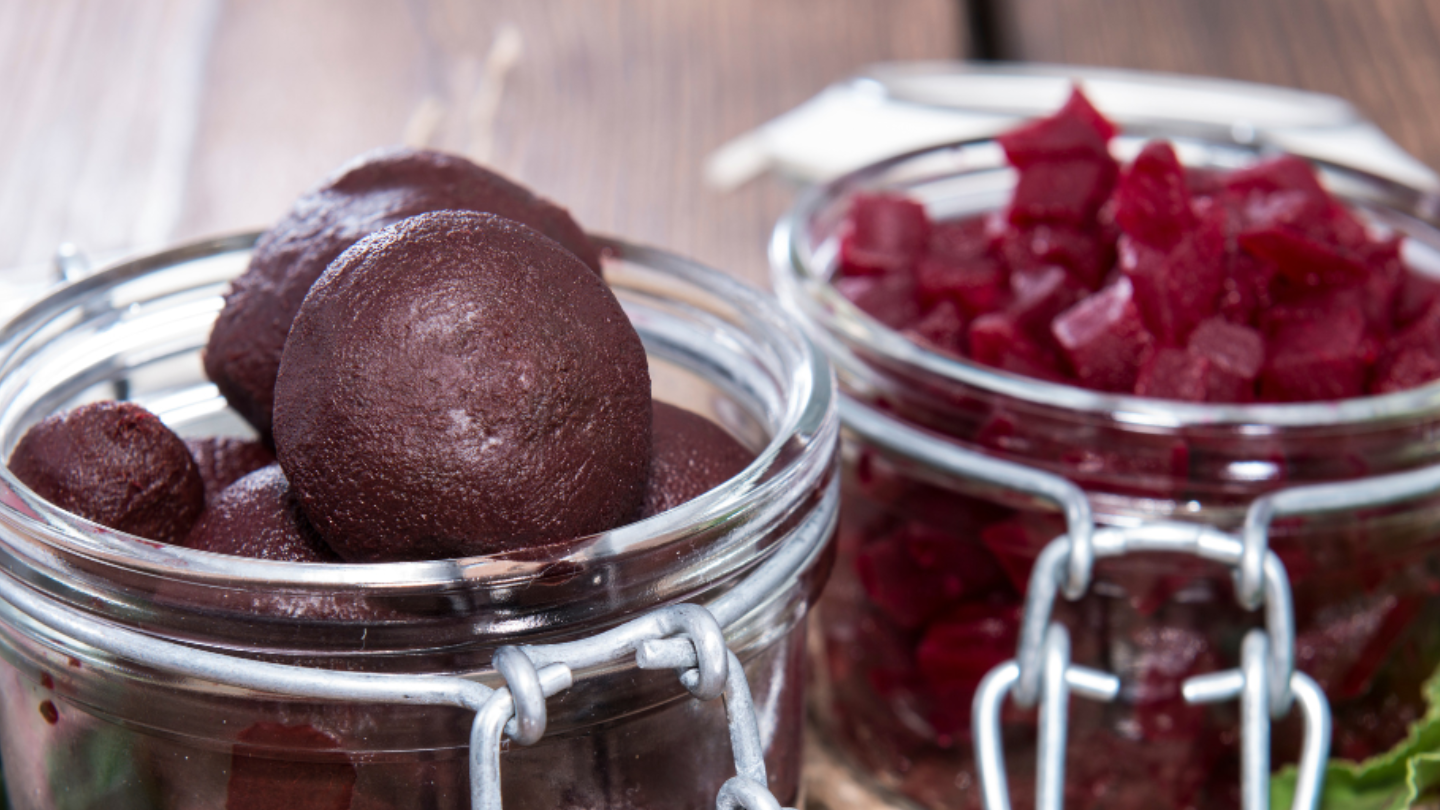
on Mar 27 2025
Learn how to pickle beetroot so you can enjoy the sweet taste all year round! Our farmers have passed down pickling recipes for generations, which have been perfected over the years. So we are excited for you to try the delicious taste of Parrish history. This juicy pickled beetroot recipe comes together in no time with pantry basics and goes well with salads or sandwiches.
Ingredients
750g Fresh Beetroot
500ml Malt Vinegar or Red Wine Vinegar
1 Tablespoon Pickling Spices (or your chosen spices)
1 Tablespoon Salt
1 Litre Jar
1 Tablespoon Sugar (Optional)
Method
In a saucepan, bring your vinegar, salt, sugar and spices to a boil to make your pickling liquid.
Top and tail your beetroot. Add to a separate pan, bring to a boil and then simmer until tender. This should take approx. 45 minutes depending on the size of your beetroot and slightly less for baby beetroot.
Once the beetroot is cooled enough to touch, peel off the skin and slice or cube. If you are using baby beetroot, you can use this whole.
Put your beetroot in your jar and cover with your pickling liquid, including the spices, and leave to cool
Once cooled, tightly lid your jar and place in the fridge or keep in a cool place
Consume within 3 months
FAQ
Does it matter which vinegar I use?
When it comes to pickling, your choice of vinegar is completely personal taste. We like to use Malt Vinegar for pickling beetroot as it has a deep and earthy flavour that spices well and compliments the beetroot. As long as your vinegar is at least 5% acidity, you can use it for pickling.
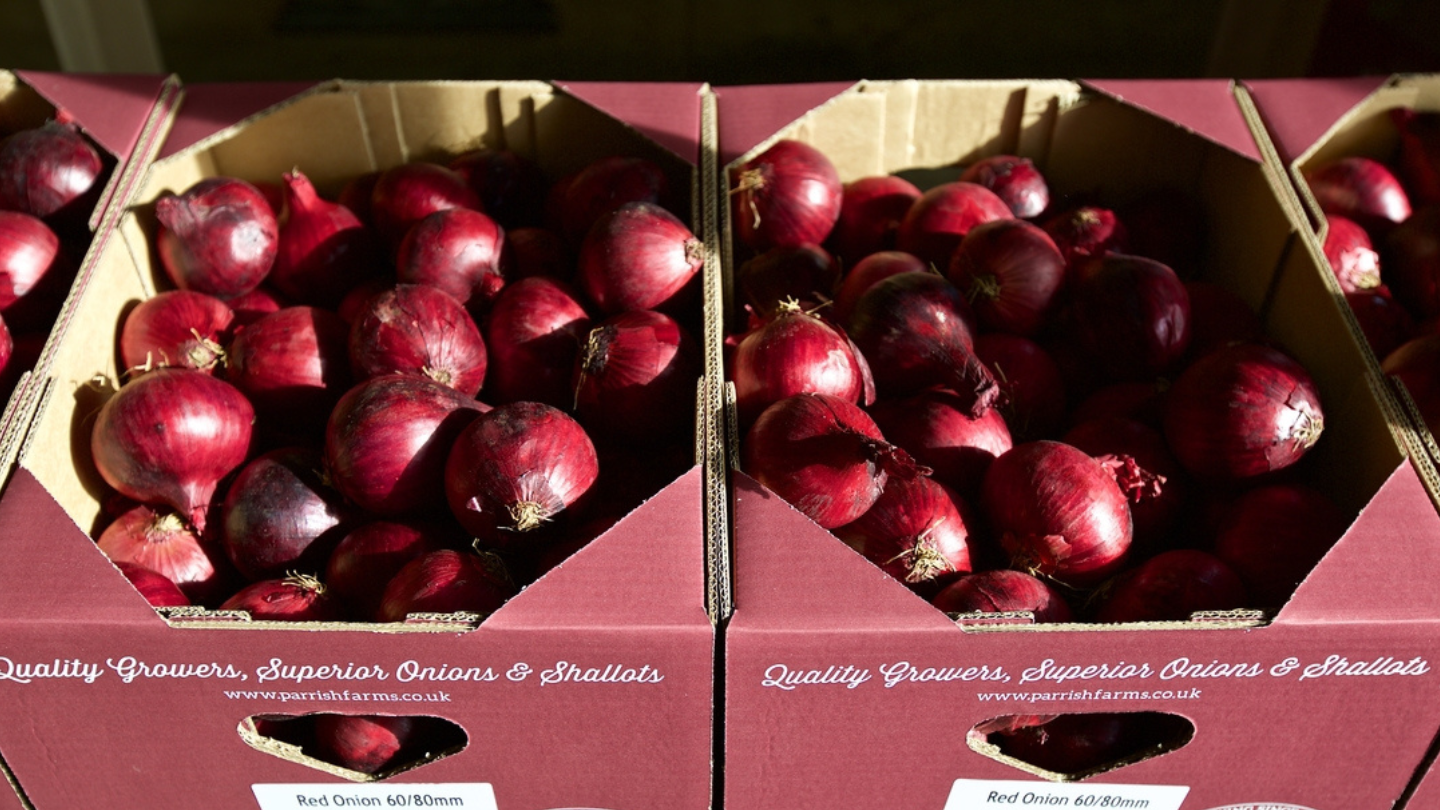
on Mar 27 2025
Learn how to pickle red onions with this quick and easy recipe that will add bright flavour and fresh crunch to so many dishes. Here at Parrish Farms, we have 90 years of experience growing and pickling our own pickling onions and shallots using this recipe, so hopefully, you'll have the same success with it!
Ingredients
750g red onions, peeled and sliced
600ml Red Wine Vinegar
1 Tablespoon Pickling Spices (or your chosen spices)
1 Tablespoon Salt
1 Tablespoons Sugar
1 Litre Jar
Method
In a saucepan, bring your vinegar, salt, sugar and spices to a boil to make your pickling liquid.
Thinly slice your red onions and put them into a sterilised jar. If you want to use any additional whole spices you can also add them to the jar at this point.
Pour the hot vinegar into the jars, making sure your onions are completely covered.
Once cooled, tightly lid your jar and place it in the fridge or keep it in a cool place.
We recommend waiting at least 2 weeks before eating.
Consume within 3 months

Recipe: Pickled Baby Echalions
on Mar 27 2025
Master the art of pickling baby echalions with this easy step-by-step recipe. Here at Parrish Farms, we have 90 years of experience growing and pickling our own pickling echalions and shallots using this recipe, so hopefully, you'll have the same success with it!
Ingredients
750g baby echalions, peeled
500ml Malt Vinegar
1 Tablespoon Pickling Spices (or your chosen spices)
1 Tablespoon Salt
1 Litre Jar
1 Tablespoon Sugar (Optional)
Additional table salt
Method
Peel and top and tail your echalions. The most important thing here is to only cut off a very small amount from each end of the echalions. If you cut off too much, you’ll find the middle of the echalions will pop out over time once in your pickling liquid. They’re still completely edible if the middle pops out but keeping it in will help the echalions keep their structure and, therefore, crunchiness!
Place your peeled echalions in a bowl, sprinkle over some table salt and leave covered for 24 hours. This process helps them stay crunchy.
In a saucepan, bring your vinegar, salt, sugar and spices to the boil to make your pickling liquid.
Rinse your echalions, dry with kitchen paper and spoon into sterilised jars. If you have any leftover spices, you can add them at this stage if desired.
Pour the hot vinegar into the jars, making sure your echalions are completely covered.
Once cooled, tightly lid your jar and place it in the fridge or keep it in a cool place.
We recommend waiting at least 2 weeks before eating.
Consume within 3 months
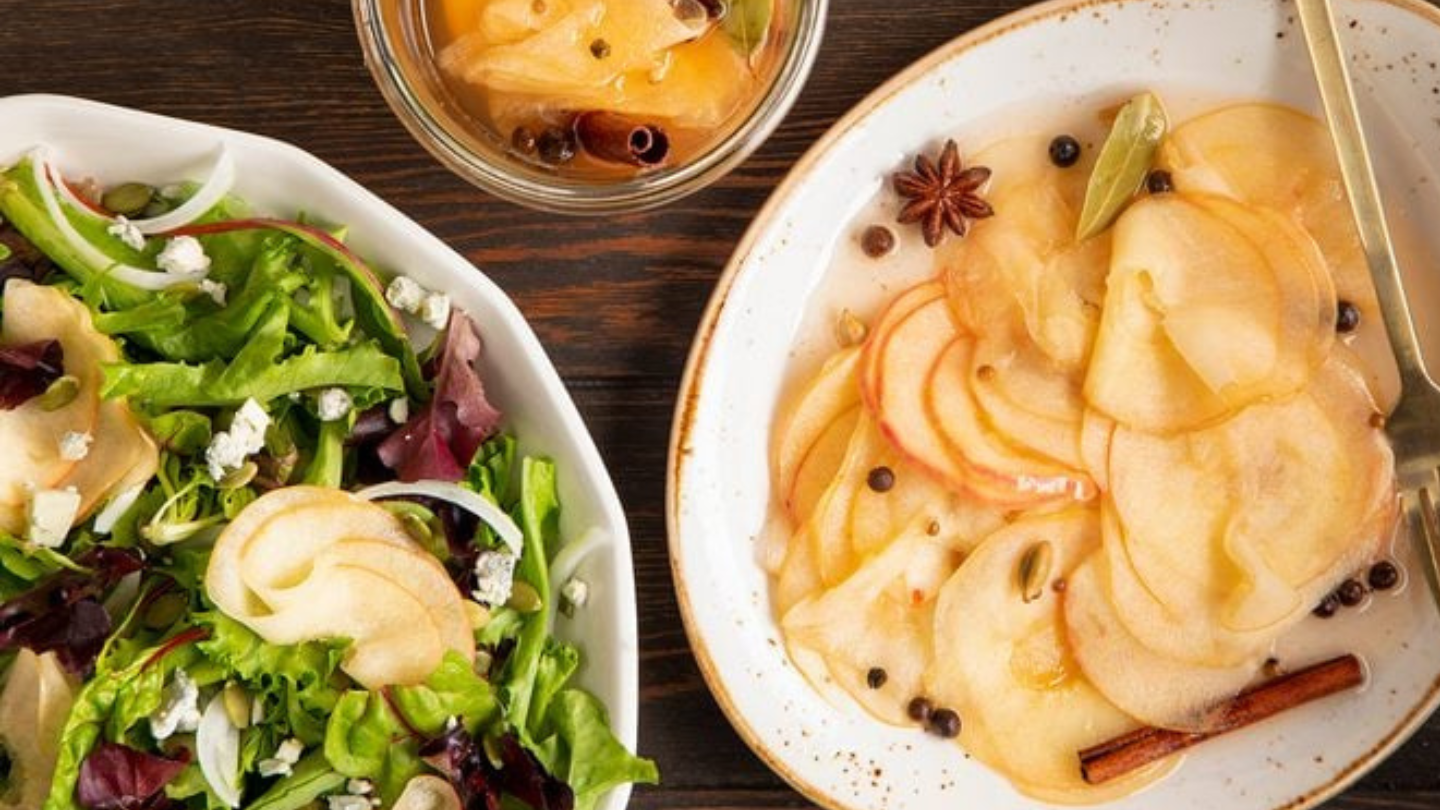
on Mar 21 2025
Easy to make and delicious to eat, these pickled apples can add an extra punch to any cheese board or salad. They would also be lovely alongside a serving of leftover pork or, even better, on a pulled pork sandwich.
Ingredients
750g Granny Smith Apples, Sliced
500ml White Wine Vinegar, Apple Cider Vinegar or Distilled Malt Vinegar
1 Tablespoon Pickling Spices (or your chosen spices)
1 Tablespoon Salt
2 Tablespoons Sugar
1 Litre Jar
Method
In a saucepan, bring your vinegar, salt, sugar and spices to a boil to make your pickling liquid, then leave to cool.
Slice your apples and fill your sterilised jar with them.
Pour your cooled vinegar over the apples, making sure they are completely covered.
Tightly lid your jar and place it in the fridge or keep it in a cool place.
Thin slices of apple don’t take long to pickle, so you can eat your pickled apples after a few hours for a freshly pickled taste. Alternatively, leave it to mature for a further couple of weeks for a deeper flavour.
Consume within 3 months
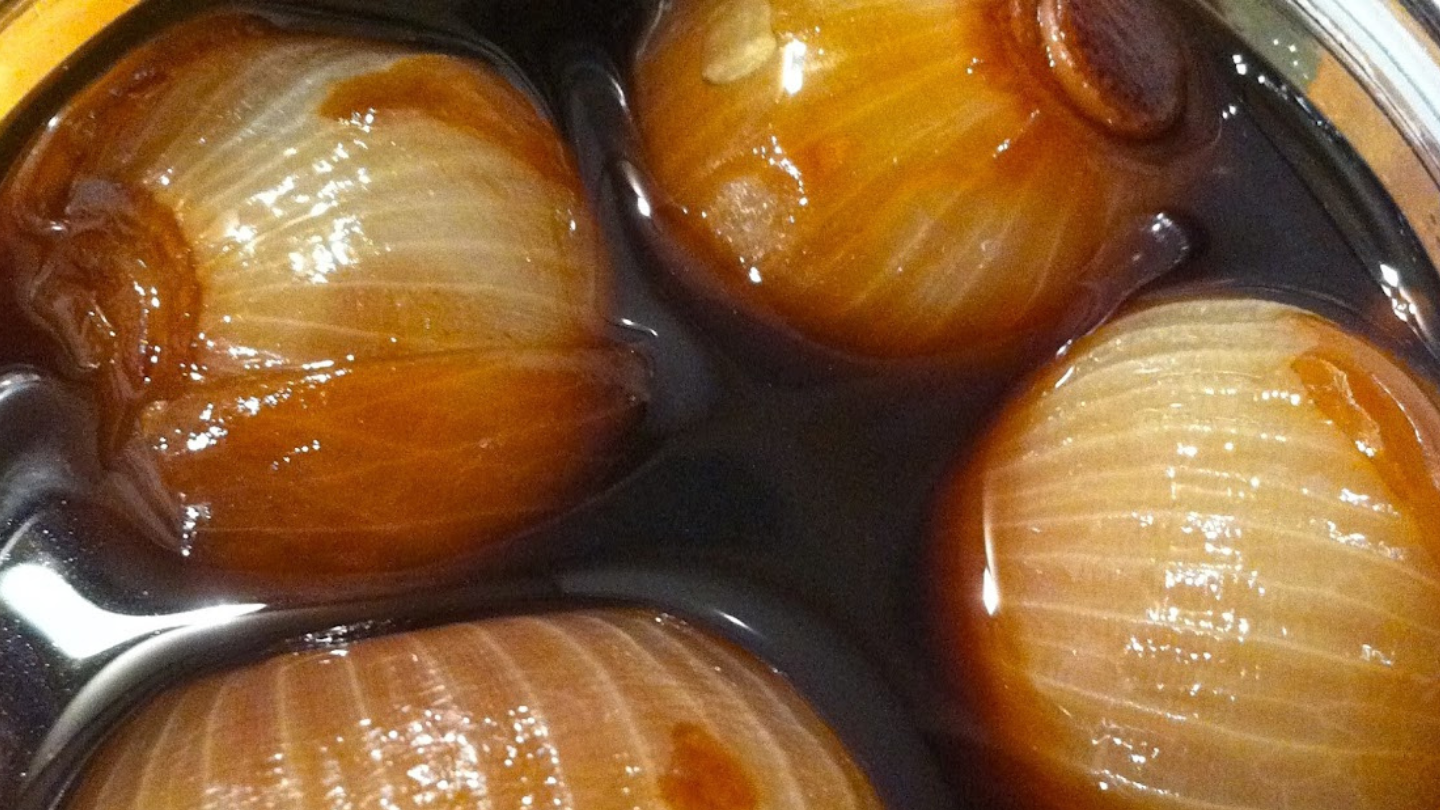
Recipe: Balsamic Pickled Onions
on Mar 21 2025
Master the art of pickling onions in balsamic vinegar with this easy step-by-step recipe! These pickled onions go down a treat with sandwiches, cheese and crackers or on a ploughman's platter.
Ingredients
750g onions or shallots, peeled
300ml Malt Vinegar
200ml Balsamic Vinegar
1 Tablespoon Pickling Spices (or your chosen spices)
1 Tablespoon Salt
2 Tablespoons Sugar
1 Litre Jar
1 Tablespoon Sugar (Optional)
Method
Place your peeled onions in a bowl, sprinkle over some salt and leave covered for 24 hours. This process helps them stay crunchy.
In a saucepan, bring your vinegar, salt, sugar and spices to a boil to make your pickling liquid.
Rinse your onions, dry with kitchen paper and spoon them into sterilised jars. If you have any leftover spices, you can add them at this stage if desired.
Pour the hot vinegar into the jars, making sure your onions are completely covered.
Once cooled, tightly lid your jar and place it in the fridge or keep it in a cool place.
We recommend waiting at least 2 weeks before eating.
Consume within 3 months
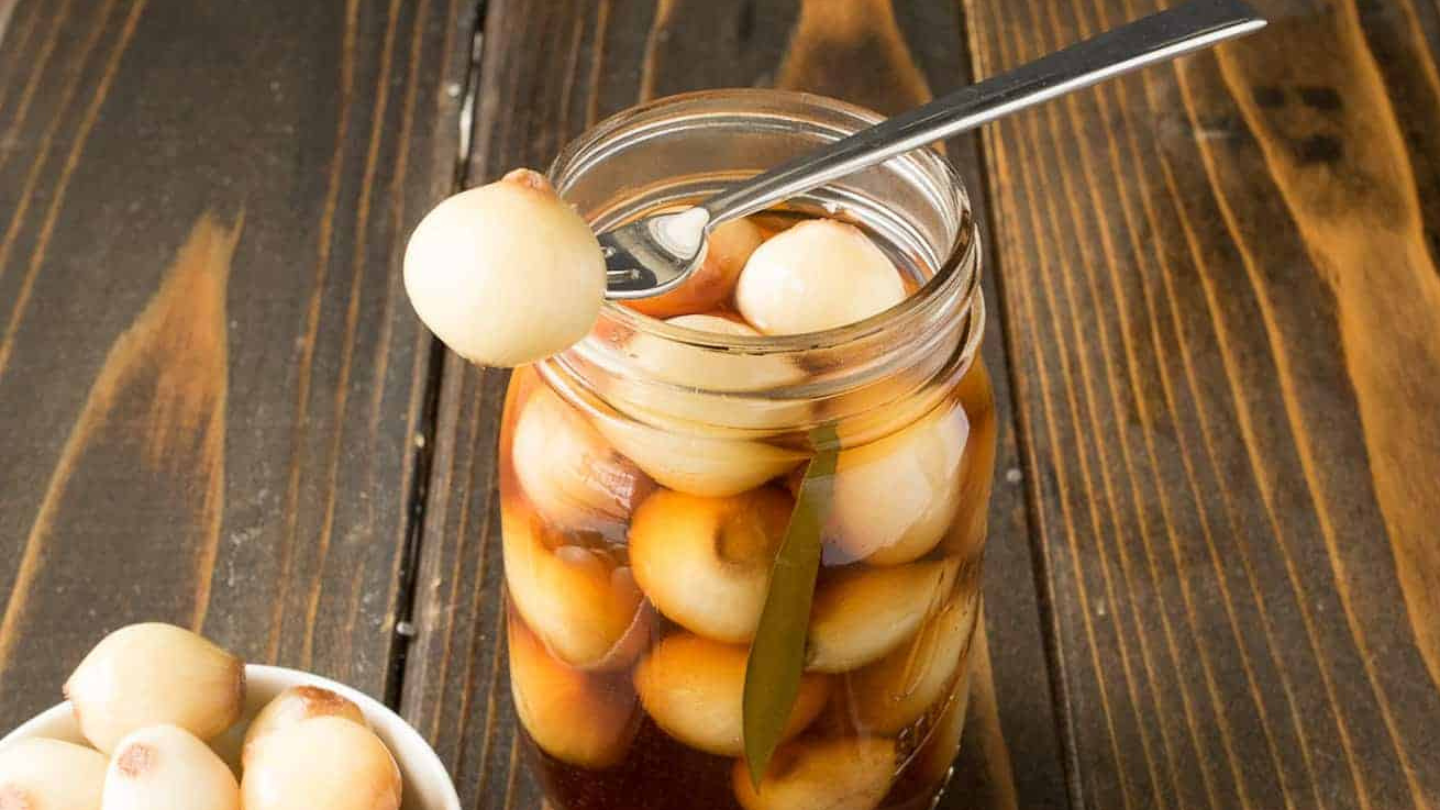
Are Pickled Onions Good for You? The Surprising Health Benefits of This Tangy Treat
on Mar 18 2025
Pickled onions have long been a staple in British households, adding a tangy crunch to ploughman’s lunches, cheese boards, and traditional pub fare. But beyond their bold flavour, you may be wondering: are pickled onions good for you? or are pickled onions healthy? Let’s delve into the potential benefits and drawbacks of this beloved condiment.
The Health Benefits of Pickled Onions
Rich in Probiotics – If pickled using a natural fermentation process, pickled onions can be a source of beneficial probiotics. These gut-friendly bacteria support digestion and overall gut health.
Low in Calories – A typical serving of pickled onions is low in calories, making them a guilt-free addition to meals. They add flavour and texture without significantly impacting your daily calorie intake.
A Source of Antioxidants – Onions, even when pickled, contain antioxidants such as quercetin, which can help combat oxidative stress and support a healthy immune system.
May Aid Digestion – The vinegar used in pickling can stimulate digestive enzymes, potentially improving digestion and nutrient absorption.
Are There Any Downsides?
While pickled onions offer some nutritional perks, they do come with a few considerations:
High in Sodium – Many commercially available pickled onions contain a high amount of salt, which can contribute to high blood pressure if consumed in excess. But naturally, we would recommend pickling your own at home!
Acidic Content – The vinegar that gives pickled onions their characteristic tang can be harsh on sensitive stomachs or those prone to acid reflux.
Added Sugars – Some varieties contain added sugars, which may not be ideal for those watching their sugar intake.
The Verdict: Are Pickled Onions Healthy?
In moderation, pickled onions can be a tasty and potentially beneficial addition to a balanced diet. Opting for homemade versions or naturally fermented varieties can enhance their health benefits while reducing added sugars and preservatives.
So, next time you enjoy a crunchy pickled onion with your meal, rest assured that you’re not just indulging in a flavourful treat—you may also be giving your health a little boost!
